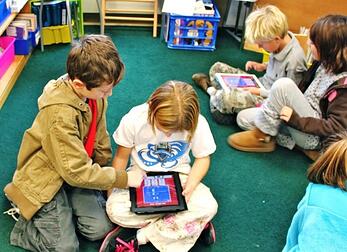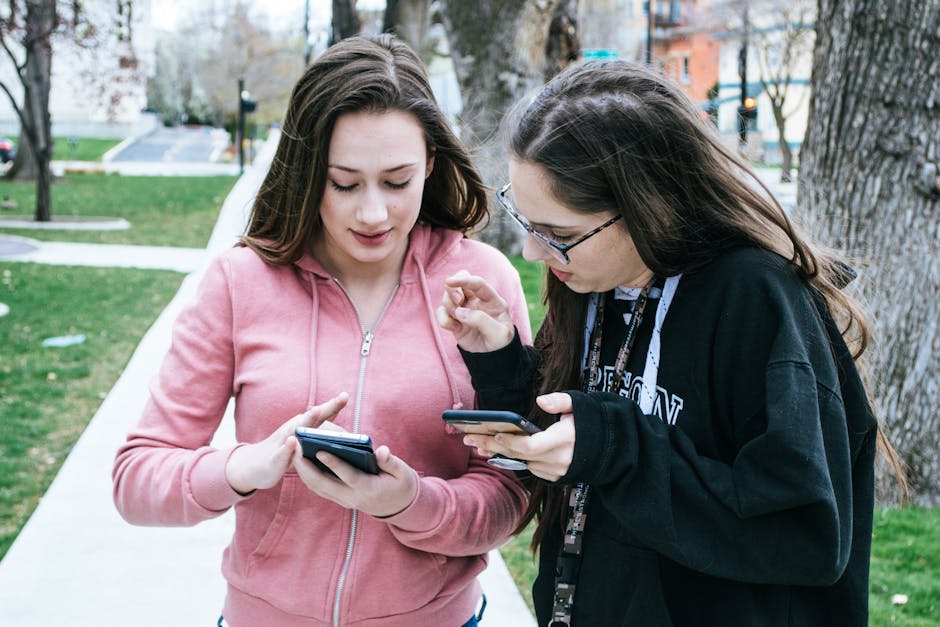Classroom Management in a BYOD Environment
Questions to ponder:
Is there a way to control
what students are looking up?
How do you successful manage a BYOD classroom?

For years teachers have battled wave after wave of technology
and its advancing bombardment on the classroom.
Throughout the 70’s and 80’s teachers fought against the use of
calculators. Complaints echoed from the
teacher’s lounge: “It is cheating!” they said.
“Students will become complacent,” reverberated others. Many would ask, “Why would they even focus on
their facts, when the computers do all the work?” The same battle resumed in the 90’s when
computers replaced word processors, and again in the 2000’s when laptops
arrived to reinforce learning by making the labs mobile. But, what most fail to realize is that the battle
with technology, is not normally a battle with the technology itself. Instead, it is a personal battle within the teacher because of their lack of knowledge of
the technology or their inability to control the process. If schools are to reach their full potential,
technology needs to be embraced and harnessed to promote learning. Since the
first battle is one that takes education and professional development, today’s
blog is an attempt to alleviate one of the teachers’ biggest concerns: how to
successfully manage a BYOD classroom?
Instead of Fearing
the Unknown, Focus on Engagement and Untapped Possibilities.
Again, and again,
teachers and administrators often fear the unknown and focus on the negatives. At
the administration level, the priorities of safety and student learning must
take precedent. The thought of adding a
BYOD policy adds stress to both. Once
again questions arise:
What if they use it inappropriately?
What if they use it to cheat?
What if it becomes a distraction?
However, what if these what ifs were eliminated altogether.
If districts would treat device infractions
the same as for typical infractions for inappropriate use, cheating, offensive,
violent or sexual content, or even bullying.
Then what makes a device infraction different?
The answer is nothing, after all a hand
gesture meant to offend someone should be reprimanded the same as if the words
were spoken; it is the same message, just a different form of communication.
A strongly written
Internet Safety Policy and
Responsible
Use Guideline informs students and guardians of expectations and notifies them
that there are consequences for not abiding by the policy. Furthermore, districts and schools are
required by law to protect students from online dangers and exposure to obscene,
sexual or violent material and should have content control software in place to
block improper content. Now, the fear
should begin to reside. What if, we use
the students’ own devices to engage and challenge students like never before?
Classroom Management
The next question to come up on the minds of most teachers’
will be: How do I successfully manage a BYOD classroom?
The answer is easier than you might expect.
In the article
Classroom
Management in a BYOD Environment , Bethany reminds us that
managing a BYOD classroom is what good
teachers do anyway:
· Establish clear guidelines
If students use their devices inappropriately,
those devices can still be confiscated, and those students are still subject to
disciplinary action. Students must know this!
· Provide students with a list of apps (resources)
that you think are beneficial for their learning.
· BE MOBILE! Proximity eliminates most negative
behaviors, circulate the classroom.
· Encourage students to use their devices for
educational purposes.
Don’t claim to be an expert of all things, if you don’t know the answer assign
a student to look it up and teach the class.
Not only is this educational but empowering.
These
are all things that good teachers do daily, the management of a BYOD classroom
does not need to be something completely new.
If something comes new up deal with it, but do not let fear of the unknown
stop you from providing your students an amazing opportunity.
For
more specific ideas and procedures to make a BYOD classroom successful, there
are countless sites and professionals that offer proactive suggestions for
easier implementation. In the blog,
10
Classroom Management Tips for BYOD, Christina Love gives ten great
suggestions that will prevent many future problems.
While all are good, teachers and administrators
should look closely at the following three:
1. BYOD Signs
Administrators should post signs
around the school to let students know if they can use their device in that
space. For areas such as bathrooms and locker rooms, post clearly visible NO
DEVICE ZONE signs. Cellphones and other BYOD devices serve no roll in locker
rooms, and restrooms and should be prohibited in such areas.
Teachers should post signs on the
door to remind students that they have planned activities for personal devices
on given days. This eliminates miscommunication.
Teachers must create a clear
visible way to notify students of if a device is permitted for an activity and
what degree it may be used. In the video,
10 Tips for
Classroom Management the idea of a stoplight was given as a visual: Red-stop
all technology, Yellow- restricted to given sites or applications, and Green- open
use.
Whatever visual chosen, students
need to know what is expected.
2. Spot Check
This is a quick way to enforce the
BYOD policy. Teachers simply, say “Spot Check.” Then students hold or turn their devices so
that their screens face you. Extra
clicking before turning should tell you that the student was probably doing something
they were not supposed to.
3. Screens Down
Most teachers use an attention statement
or visual. When you need students’
attention, say “Screens down.” This tells
the students to turn over the device so that the screen is down or close their
laptop lid and focus on you for further instruction.
4. Observe Body
Language
Teachers must learn the
difference between what social use on a device looks like compared to
educational use. The author tells us to notice that when students are texting
friends that it happens in short bursts and involves only a few finger strokes,
while often followed by smiles or snickers. Whereas, writing a report tends to
involve continuous typing accompanied by a focused expression. Noticing body language, will help teachers of
BYOD classrooms to keep the students engaged in educational content.
With time, personal devices and other technology has infiltrated
schools across the nation and will continue to force education to evolve. BYOD classrooms and schools are here and
increasing in numbers. Today’s students are
eager to take on this challenge and help the institution of education progress into
what it can be. The possibilities are truly
endless. Students will never be the
same. As for teachers, nor will they. Hopefully, some of the information and advice
in this blog has reduced your stress level and outlined ideas for continuing
good teaching through the current revolution and into the future.
Comment below:
What questions or concerns do you still have?
What other suggestions do you have to help successfully
manage a BYOD classroom?
By Nick Rice
 1. Analyze the Benefits
1. Analyze the Benefits













